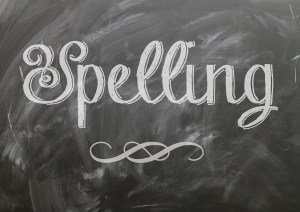
The above definition was “written” by the ChatGPT interface, an artificial intelligence.
I had the idea to use AI after reading a book on how to generate passive income. I played with it a bit and decided to see if I could do what the book suggested, let AI generate a year’s worth of blog posts in a week to free up some of my time. I soon learned that this was easier said than done.
There is a pattern to the way AI—and ChatGPT in particular—formulates its blog posts. For example, the structure of most posts it generates is the same, beginning with an introduction, providing a list of three to five items complete with subtitles, and ending with a conclusion that says virtually the same thing as the introduction. If you don’t like what the AI produces for you, it can be regenerated, but there is no guarantee the new content will be significantly different.
It took me close to two weeks to generate enough content for 52 blog posts for my sister site, largely because I had to rewrite, revise, and pad most of the blog posts. Rumour has it that Google won’t index blogs it thinks use AI, so I had to do some heavy editing to make the text sound more like me than directly copied and pasted from the AI interface. I did, however, do a few plagiarism checks using Grammarly, but there was no indication that the AI had written anything that might be considered plagiarized.
From generating blog posts, I switched focus to having the AI generate an entire book for me. I decided to create a writing journal-type book with 365 writing prompts. I call it 365-Day Writing Challenge: A Year of Writing Prompts. This took me three weeks to generate enough unique and doable prompts. I learned that AI likes fantasy. Both ChatGPT and Boo.ai sites seemed to default to prompts about people time travelling, losing their memories, inheriting haunted places, travelling to alternate realities, or writing from the point of inanimate objects, which was frustrating. I witnessed the machine learning aspect of AI firsthand when, after more than a week and getting prompts close to what I was looking for, I cleared the list of questions I had asked ChatGPT, and it stopped giving me answers I liked. It took a few days to re-train it to give me get good results again.
As for the question of whether AI lives up to the hype? The jury is hung on this one. It is a great tool for writing blog posts and outlines or getting ideas when you have writer’s block (it can outline whole novels for you if you ask it to and work with it long enough). It’s also good for writing advertising copy after a good revision and edit.
Could students use AI to outline their essays for them? Probably. Will they be good enough to pass teacher scrutiny? Not likely. AI writing tends to be superficial at best. For example, when I asked it to write advertising copy for this website, it took keywords I used in my last few posts and extrapolated that to write the blurb. According to it, I have written all sorts of books in genres I have never attempted (like romance). It also lists book titles I have never written and states that one of my books is a series when it is a standalone book.
In my opinion, the kind of text written by AI is limited. It cannot generate unique ideas, but it can repackage old ones. If you use AI to assist you in outlining your book, it might help you to get started on your writing journey, but if you plan to use it to flesh out your book in its entirety? I will let ChatGPT answer that question for you:
AI-generated writing is typically based on patterns and algorithms that the machine has learned from a large amount of input data. This means that the output is often formulaic and lacks the creativity and originality of human writing. Additionally, AI may not be able to capture the nuances and complexities of human emotions and experiences that are often the hallmark of great fiction.
Moreover, using AI to write an entire fiction novel raises ethical questions around intellectual property and authorship. It is unclear who would own the rights to an AI-generated novel, and whether it would be considered original work or plagiarism.
Happy writing!

 Check out any writing site and it will tell you how important it is for an author to build her mailing list. Mailing lists help you to get noticed and build a relationship with your readers which, in turn, helps sell books.
Check out any writing site and it will tell you how important it is for an author to build her mailing list. Mailing lists help you to get noticed and build a relationship with your readers which, in turn, helps sell books. Many sources will tell you to offer people an incentive for subscribing to your email list. Plenty of authors offer free books as an incentive, so I put together a book documenting how I’d planned and executed my last blog tour, complete with links to actual sites I used and statistics for click-throughs vs. impressions vs. sales. It was the perfect incentive for authors.
Many sources will tell you to offer people an incentive for subscribing to your email list. Plenty of authors offer free books as an incentive, so I put together a book documenting how I’d planned and executed my last blog tour, complete with links to actual sites I used and statistics for click-throughs vs. impressions vs. sales. It was the perfect incentive for authors.

 The last book I released, I Was, Am, Will Be Alice, is a time travel fiction (largely inspired by The Time Traveler’s Wife), as is my as of yet unfinished manuscript, tentatively entitled Cat and Mouse: A Love Story, largely inspired
The last book I released, I Was, Am, Will Be Alice, is a time travel fiction (largely inspired by The Time Traveler’s Wife), as is my as of yet unfinished manuscript, tentatively entitled Cat and Mouse: A Love Story, largely inspired The future is a dystopia, largely due to the fact that a meteor will hit Earth with devastating consequences. They have figured out how to transfer consciousness back in time with the help of a large supercomputer. A team of scientists have their consciousnesses sent back in time to change the past and make the world a better place. To do this, the supercomputer–known as the Director–pinpoints the moment of a host’s death and transfers the future consciousness in the seconds before the host dies. This show is made interesting by the characters of the hosts, which include an FBI agent with a failing marriage, a mentally impaired woman and her social worker, an addict, a teenaged football player, and a woman who is fighting for custody of her son with her abusive, police officer husband. Eric McCormack, a long time favourite of mine since Will and Grace, stars.
The future is a dystopia, largely due to the fact that a meteor will hit Earth with devastating consequences. They have figured out how to transfer consciousness back in time with the help of a large supercomputer. A team of scientists have their consciousnesses sent back in time to change the past and make the world a better place. To do this, the supercomputer–known as the Director–pinpoints the moment of a host’s death and transfers the future consciousness in the seconds before the host dies. This show is made interesting by the characters of the hosts, which include an FBI agent with a failing marriage, a mentally impaired woman and her social worker, an addict, a teenaged football player, and a woman who is fighting for custody of her son with her abusive, police officer husband. Eric McCormack, a long time favourite of mine since Will and Grace, stars. When a seemingly bad guy steals a time machine from a top secret think tank, a historian, a soldier, and a pilot chase him through time in an effort to preserve the timeline. In the first episode, misunderstood Garcia Flynn (expertly played Goran Visnjic) introduces the Rittenhouse Corporation, a Mafia-like group of people who have infiltrated every aspect of government and power corporations for centuries. Through the course of the season, we learn that Flynn is only out to stop Rittenhouse to save his family (whom he believes was murdered by members of Rittenhouse) and make the world a better place. Abigail Spencer, Matt Lanter, and Malcolm Barrett have such incredible chemistry as the team of heroes out to stop Flynn, that by the time they realize they’re fighting for the wrong team, they can do no wrong in the viewers’ eyes.
When a seemingly bad guy steals a time machine from a top secret think tank, a historian, a soldier, and a pilot chase him through time in an effort to preserve the timeline. In the first episode, misunderstood Garcia Flynn (expertly played Goran Visnjic) introduces the Rittenhouse Corporation, a Mafia-like group of people who have infiltrated every aspect of government and power corporations for centuries. Through the course of the season, we learn that Flynn is only out to stop Rittenhouse to save his family (whom he believes was murdered by members of Rittenhouse) and make the world a better place. Abigail Spencer, Matt Lanter, and Malcolm Barrett have such incredible chemistry as the team of heroes out to stop Flynn, that by the time they realize they’re fighting for the wrong team, they can do no wrong in the viewers’ eyes. Based on the movie by the same name, Frequency supposes that a ham radio can connect the present to the past. In Frequency, police officer Raimy Sullivan learns she can talk to her father over his old radio. The only problem is her father died 20 years ago. Raimy gives her father advice which saves him from the accident that took his life. She goes into work the next morning only to learn that her mother–safe before Raimy had saved her father’s life–went missing twenty years ago and her bones are on the coroner’s table. Her mother, it seems, was a victim of the Nightingale Killer. As if to make matters worse, she is a stranger to her fiancee. Raimy and her father, Frank, spend the season as partners as they try to catch the Nightingale Killer on both ends of the time continuum.
Based on the movie by the same name, Frequency supposes that a ham radio can connect the present to the past. In Frequency, police officer Raimy Sullivan learns she can talk to her father over his old radio. The only problem is her father died 20 years ago. Raimy gives her father advice which saves him from the accident that took his life. She goes into work the next morning only to learn that her mother–safe before Raimy had saved her father’s life–went missing twenty years ago and her bones are on the coroner’s table. Her mother, it seems, was a victim of the Nightingale Killer. As if to make matters worse, she is a stranger to her fiancee. Raimy and her father, Frank, spend the season as partners as they try to catch the Nightingale Killer on both ends of the time continuum. I remember seeing Time After Time, the movie, as a young adult. I loved the fact that H. G. Wells was portrayed as a time traveller. The Time Machine reads more like a journal, after all, documenting the travels of a scientist into the past and incredibly distant future to check in on the evolution of mankind. It’s not hard to imagine that the novel was Wells’s actual journal. In Time After Time, H.G. Wells invents a time machine that is immediately appropriated by Jack the Ripper who goes forward in time to escape capture and continues his murderous ways. The show is more cat and mouse thriller than time travel epic as Dr. John Stephenson (Jack the Ripper) taunts Wells, daring him to follow through with his threat to capture him before his next kill.
I remember seeing Time After Time, the movie, as a young adult. I loved the fact that H. G. Wells was portrayed as a time traveller. The Time Machine reads more like a journal, after all, documenting the travels of a scientist into the past and incredibly distant future to check in on the evolution of mankind. It’s not hard to imagine that the novel was Wells’s actual journal. In Time After Time, H.G. Wells invents a time machine that is immediately appropriated by Jack the Ripper who goes forward in time to escape capture and continues his murderous ways. The show is more cat and mouse thriller than time travel epic as Dr. John Stephenson (Jack the Ripper) taunts Wells, daring him to follow through with his threat to capture him before his next kill. A time travelling duffle bag is absurd on the face of it. Even so, I could accept it provided the show did something smart with it. In the first two episodes, Dan goes back to make sure the American Revolution happens, only to find that the founding fathers are even dumber than he is, and though they love their guns and will only be riled when the British threaten to take them away (cue the political satire), they refuse to do anything more than threaten to take the guns and aver their love for guns. There’s a love affair (as in Time After Time), false identities with modern names, and claiming of song lyrics that won’t be written for centuries (as in Back to the Future). Though there may be a few moments that made me smile, this was even more groan-worthy than Legends of Tomorrow at it’s campy best.
A time travelling duffle bag is absurd on the face of it. Even so, I could accept it provided the show did something smart with it. In the first two episodes, Dan goes back to make sure the American Revolution happens, only to find that the founding fathers are even dumber than he is, and though they love their guns and will only be riled when the British threaten to take them away (cue the political satire), they refuse to do anything more than threaten to take the guns and aver their love for guns. There’s a love affair (as in Time After Time), false identities with modern names, and claiming of song lyrics that won’t be written for centuries (as in Back to the Future). Though there may be a few moments that made me smile, this was even more groan-worthy than Legends of Tomorrow at it’s campy best.



